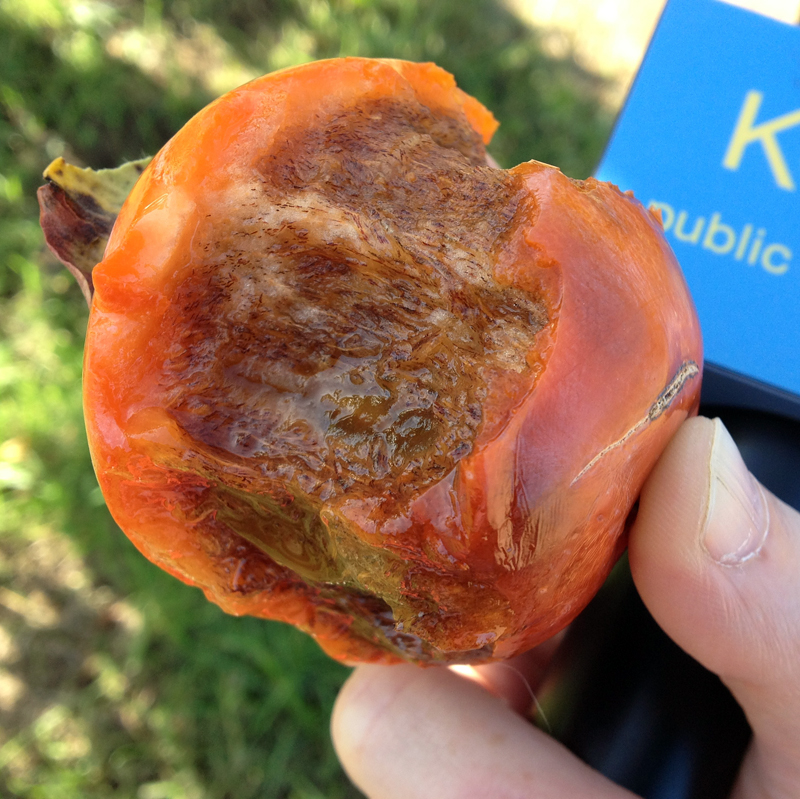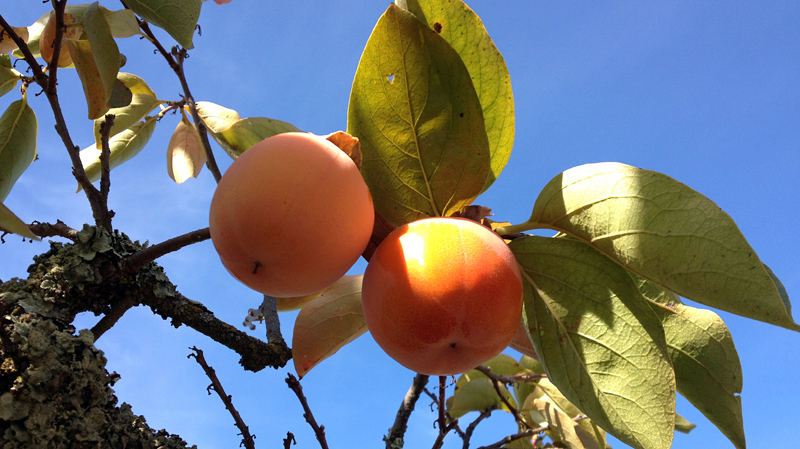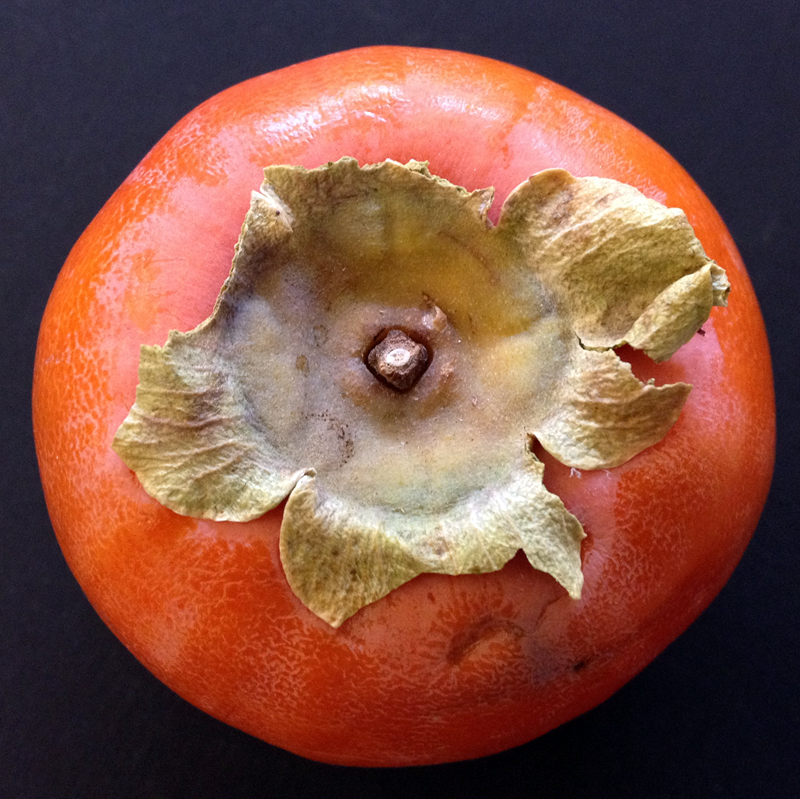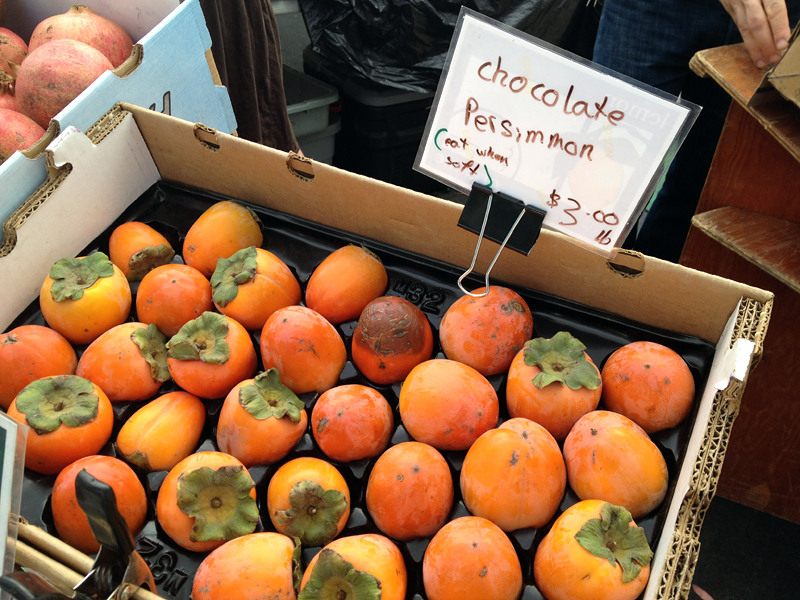Karp got in his battered old truck nicknamed Bessie and canvassed the state, visiting Japanese family farms from San Diego County to the Sierra foothills. It took Karp a couple of years to get to a particular farm famous for its Maru, and by that time, word had gotten out there was a crazed pomologist combing the back roads.
"Tosh Kuratomi greeted me at the door," Karp recalls. "He said, 'I always knew you’d find your way here some day.'"
Otow Orchard sits on 20 sunny acres east of Sacramento in Granite Bay. Suburbs have sprung up in what used to be farm country, and if you weren't looking for the hand painted signs promising fruit, you might fly right past the farm. But Placer County is the Garden of Eden for California persimmon lovers.
On the day I turned up, I arrived just in time to join Tosh Kuratomi as he led a pack of pre-schoolers from Folsom American River Montessori on an orchard tour. As it happens, chocolate persimmons are his favorite, too. Kuratomi reached into one likely looking tree to grab a round fruit the size of a tangerine.
"You see how the skin is?" he said to the pint-sized toddlers. "You see how it’s starting to get brown? This nice orange fruit is starting to show brown, almost like bruises. That’s the flesh inside. Anyone wants to take a bite?"
Debbie Doss, the gal leading this group, couldn't help herself from interrupting. "Oh that’s -- you guys -- that’s to die for. It is so delicious."

The inside view of the Maru or chocolate persimmon. Photo: Rachel Myrow
With that endorsement, everybody’s hands shot out for a sample.
Why aren't there Maru piled high in every supermarket in the land? In truth, there are several reasons, starting with the fact many Americans associate the color brown with spoilage.
Kuratomi says "We’ve had calls from customers saying “Boy, you just sent us a box of rotten persimmons. We just threw them out.” He urges them to go digging in the trash to retrieve the fruit.
Perhaps even more damning: the Maru requires pollination to ripen. That doesn’t always happen, and sometimes, only some of the fruit is pollinated.
"If it’s yellow, eat the brown part," Kuratomi warns the tour group. "You only want the brown part, because the yellow part will make your mouth feel funny."
If you've ever eaten a Hachiya persimmon before it was fully ripe, you know what he's talking about. The flesh is what the experts call "astringent." Captain John Smith wrote famously in 1607 of his encounter with an unripe American persimmon: "It will drive a man's mouth awry with much torment."
Even worse: you can't tell whether a Maru is pollinated from the outside. "Now that is the kiss of death commercially," David Karp says. "You can’t tell from the outside whether it’s edible or not."
In the farm store, Kuratomi's wife Chris takes the time to educate customers about all nine varieties of persimmon they sell, starting with how to know when they’re ripe. Presuming your fruit is ripe, Chris sees no need to cook or otherwise fuss with what Mother Nature made perfect. "I just eat them out of hand," she says. "That’s the best way."
Over the years, word has gotten out about Otow Orchard. Public TV stations play a California Gold segment by Huell Howser every fall. There have been magazine profiles, some written by David Karp. Then there's the word of mouth from people like Randy Fong, who drives all the way from South San Francisco every year. That’s two hours each way just for persimmons.
"It’s important to me," he says, carefully holding a box of a dozen persimmons. "I’m a firm believer in either buying local or supporting the smaller people."
Listen to The California Report radio story: Family Cultivates Persimmon History




